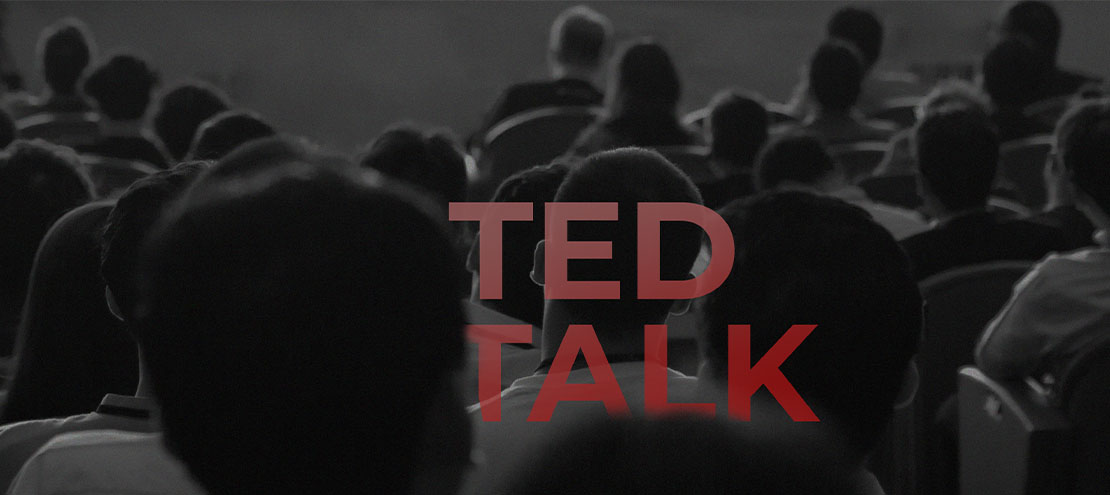What’s in this article:
- Another chapter in PostFunnel’s TED Talk lessons for marketers
- Here we look at five tactics to use to ensure you’re hearing your customers loud and clear
As Treasure bluntly puts it, we are “losing our listening”.
In the hustle and bustle of our daily lives, it’s often easier to tune out everything — even when tuning in may be necessary.
Though Treasure’s Talk focuses on how we as individuals can improve our ability to tune in and truly listen to the world around us, his advice can also apply to the world of marketing in a number of ways.
Here, we’ll take a look at how you can use Treasure’s tips to become more in-tune with what your customers are telling you — and how you can use what you learn to provide more value to them in the future.
When you truly understand what your customers are saying and properly listen to them – you can build lasting relationships with existing clients. In turn, it will contribute to the overall growth of your business.
Let’s dive in.
Seek Out Silence to Recalibrate Your Listening Efforts
Ironically enough, Treasure’s first piece of advice for improved listening is to remove yourself from as much sound (read: noise) as you possibly can.
Here, Treasure’s advice is to literally seek out a silent — or at least quiet — environment for a few moments every day. For individuals, the goal is to give your ears and your mind a chance to rest and to experience somewhat of a “reset” to avoid becoming overwhelmed.
For marketing teams, who are constantly being bombarded with information and data from all angles, it’s just as important to take a step back from time to time to avoid this same overwhelming feeling.
Let things get too “noisy”, and it’ll become almost impossible to hear what your customers are trying to tell you.
And, even if you can somewhat get a handle on the deluge of customer data coming in, it’ll be pretty difficult to know exactly what to do with the information you’re hearing. Worse yet, you may also lose sight of what you were originally listening for — and end up chasing after data and information that doesn’t tell you all that much about your customers’ needs.
Now, this isn’t to say that you should stop listening to your customers on a regular basis.
And you definitely don’t want to remove your customers’ ability to make their voices heard, even for a short period of time.
Rather, the idea is for your team to recognize when you’ve perhaps been listening too intently — to the point that most of what you’re hearing doesn’t help you make any meaningful improvements to your approach to marketing.
If your team reaches this point, the best thing to do is to reset your approach to listening to your customers altogether. This will allow you to pare down on the incoming “noise” and focus on collecting the customer data needed to supercharge your marketing efforts.
Identify the Channels You Should Be Listening to — and how to Listen to Them
As Treasure explains, the world is a noisy place, which can often cause us to tune out everything around us.
On an individual level, Treasure suggests we can overcome this by focusing on the singular sounds surrounding us when stuck in a noisy environment — his example being a busy coffee shop.

It’s a three-step process involving:
- Isolating the individual sounds around us
- Identifying and understanding where each noise is coming from
- Listening to each sound intentionally and intensely
These tactics can be applied in the world of marketing, as well:
First, you need to isolate your incoming customer data, allowing each piece of information to exist on its own — and not allow other pieces of data to influence your understanding of each individual data point.
While you’ll likely know where this information is coming from (e.g., direct customer feedback, social media mentions, etc.), you also need to understand the nature of this info, and why it’s coming from the source it’s coming from. The context in which the information exists will add an entirely new layer to your understanding of your customers.
For example, your customers may be more apt to speak at length about your brand when posting on their personal social media pages — but may provide mere surface-level feedback when directly asked for it. Your job here is to understand why their approach varies as it does — and to figure out how to use each channel to get the absolute most you can get out of your customers whenever they engage with your brand.
That said, your various marketing channels — and the information you glean from each — shouldn’t compete with one another. And one channel should never cancel out the other in any way.
Again, the goal is to understand the nuances between each channel, and how these nuances impact the way your customers engage with your brand on each. In paying close attention to the customer data collected on each channel, you’ll gain a more comprehensive understanding of who your customers are and what they expect from your brand.
Savor the “Hidden Choir” Surrounding Your Brand
Treasure’s third piece of advice is for listeners to “savor” the “hidden choir” that’s going on all around them on a nearly constant basis.
As Treasure explains, the idea is to tune in to even the most mundane of sounds to truly appreciate the beauty of them all.
Speaking to the individual, Treasure speaks of the more aesthetic beauty of everyday sounds. From dryers tumbling to coffee beans grinding, the world is full of interesting and beautiful sounds.
But it’s up to the individual to stop taking these everyday sounds for granted — and to truly see the beauty in the constant cacophony all around us.
The same can be said in the marketing world, as well:
As we’ve said, your customers are constantly providing valuable information in some way or another — even during the most mundane engagements. Unfortunately, overlooking these routing exchanges can cause you to miss out on info that could lead to a major boost to your marketing efforts.
Simply put:
If you’re only listening to your customers when it’s obvious that you should be, you’re missing out.
Yes, it’s crucial to intentionally solicit feedback from your audience. And yes, you need to be listening when they speak up about a problem or challenge they’re facing (or any other feedback they may have).
But you also need to be listening when things aren’t so intentional — and even when your customers seemingly have nothing to say.
For starters, never assume that “no news is good news”, or that your customers would, with certainty, reach out if they had something important to tell you.
(Quite often, they won’t.)
To truly be able to listen to your customers, you need to look beyond mere verbal cues — and instead pay attention to their actions and behaviors throughout their journey with your brand.
- Where are they able to make progress with ease?
- Where do they get hung up?
- Where do they need assistance — and why are they/aren’t they reaching out for help?
The more in-tune you are with what your customers tell you — even if they’re not saying it directly — the easier it will be to make the improvements needed to keep them on board.
Assume Intentional Listening Positions
Treasure’s fourth piece of advice to become a better listener is to consciously adopt specific “listening positions” based on your current circumstances.
For both individual people and marketing teams, assuming the proper listening position can not only improve your listening skills, but also allow you to get more out of every conversation or engagement you have.
Overall, Treasure mentions three “pairs” of listening positions:
- Active Listening: Intentionally soliciting comments, feedback, etc., while also keeping the conversation focused on a specific topic.
- Passive Listening: Listening via observation while allowing the customer to go through a certain process uninterrupted.
- Reductive Listening: Bringing discussions from the broad to the specific, enabling your customers to get to the heart of the matter at hand.
- Expansive Listening: Extrapolating on a specific point to better understand the “big picture” regarding your customers’ branded experiences.
(For more on reductive and expansive listening, see how marketers can use the Socratic method to better understand their customers.)
- Critical Listening: Facilitating a conversation based on factual, quantitative information.
- Empathetic Listening: Facilitating a conversation focused on emotions and forging an authentic relationship.
Again, each of these listening positions can — and should — be used by marketers at different times to gain a more comprehensive understanding of their customers.
The trick, then, is knowing when to use each.
To determine the best listening approach to take for a given moment, you need to:
- Know what information you’re looking to glean from the conversation
- Understand who you’re talking to (and how they typically engage with brands like yours)
- Have a clear idea of where you can take the conversation moving forward
Which brings us to Treasure’s final piece of advice.
RASA: Squeeze the Juice Out of Everything You’re Hearing
Lastly, Treasure creates an acronym using the Sanskrit word for “juice” or “essence” — rasa — to describe the key elements of effective interpersonal listening.
The first step is to receive the party to be listened to. This means giving your customers your complete, intentional, and undivided attention when conversing or engaging with them in any way.
(Even if you’re merely observing them, as mentioned above, it’s still important to stay focused and assure them that you’re paying attention.)
You also need to appreciate and acknowledge your customers throughout the exchange. As they speak and volunteer information, be sure to telegraph the fact that you’re hanging onto every word they say. As the exchange progresses and eventually comes to a close, you should thank them for putting in the time and effort needed to provide the insight they’ve given.
As the customer explains their perspective, describes their experiences, or discusses their expectations, you’ll want to summarize everything they’ve told you. Restating this information in your own words will confirm in your listener’s mind that you’ve heard them loud and clear — and will also reinforce your understanding of the information they’ve given you.
Finally, it’s crucial to ask your customers questions throughout every conversation you have with them. For one, this will help you clarify everything they tell you — which will aid your ability to summarize their comments as you wrap things up. On top of that, asking questions will allow you to dig deeper into the discussion and uncover additional information the customer may not have volunteered (or even thought about) on their own.
Your goal is to squeeze as much juice (read: “information”) out of your customers as you possibly can whenever you engage with them. By using the rasa framework, you’ll enable your customers to say everything they need to say — and will ensure that every conversation they have with your team will lead to a better experience for them in the future.
The post Marketing Lessons from Non-Marketing TED Talks: 5 Ways to Listen Better (to Your Customers) appeared first on Post Funnel.




